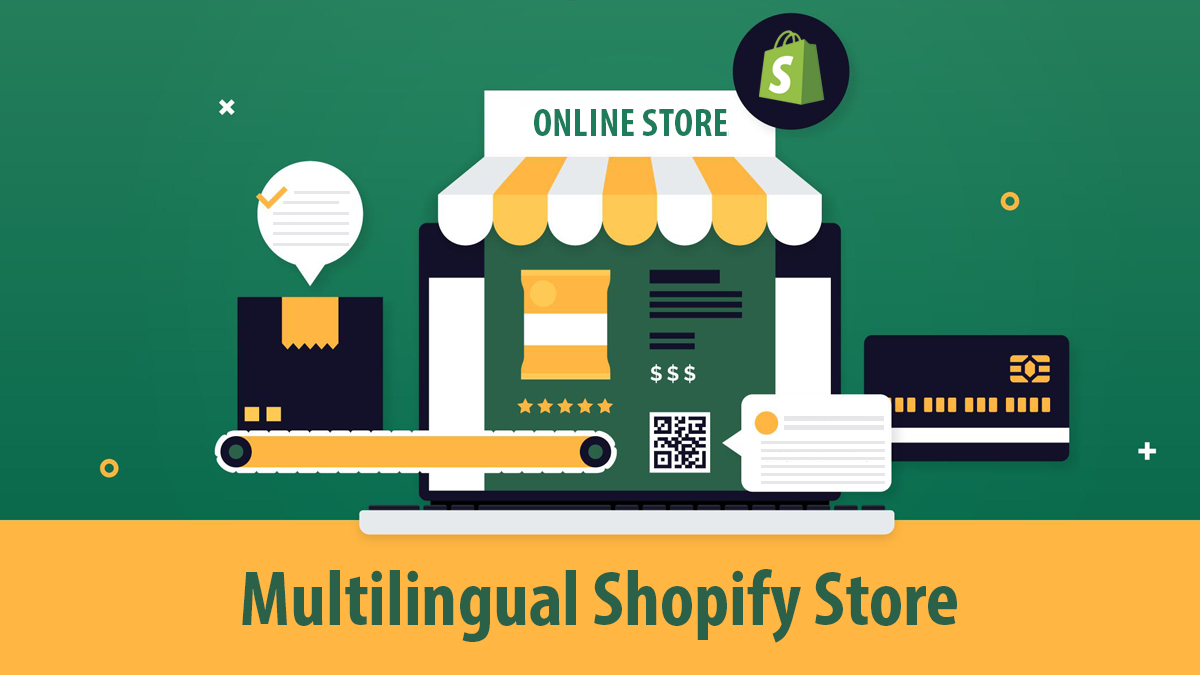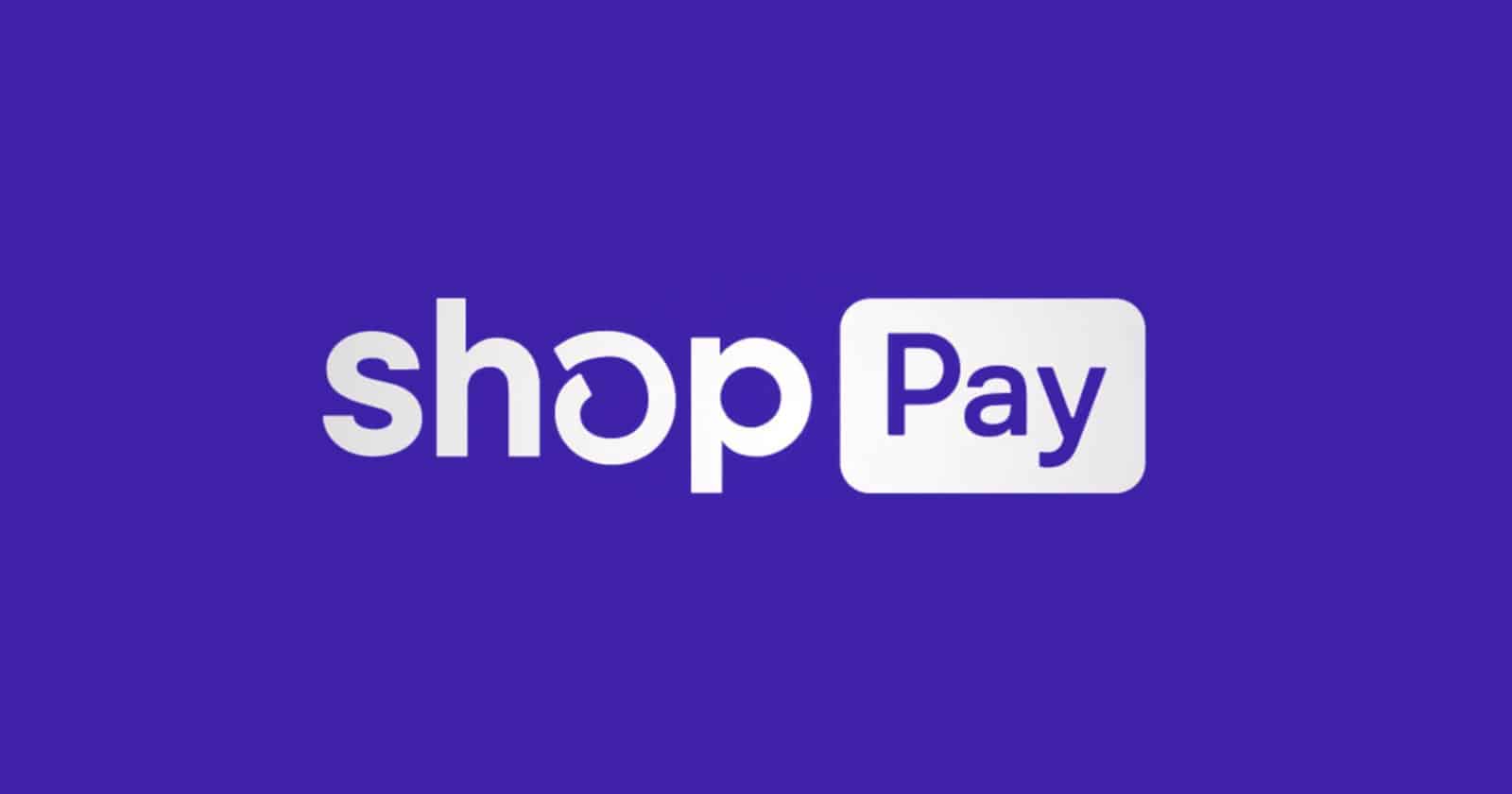As eCommerce continues to expand globally, having a multilingual online store can be a game-changer for your business. A multilingual Shopify store not only allows you to reach new audiences but also helps you connect with customers who prefer to shop in their native language. However, building a multilingual store can be a daunting task, especially if you’re new to the process. In this comprehensive guide, we’ll walk you through everything you need to know how to build a multilingual Shopify store from start to finish. So, let’s get started!
What is a Multilingual Shopify Store?
A multilingual Shopify store is an online store accessible in more than one language. This implies that clients from different countries and speaking different languages can easily explore the site in their preferred language. Setting up a multilingual Shopify store can help your business in more than one way.
Why Are Multilingual Stores Necessary?
To Attract More Visitors
Buyers feel more associated when they see a site in their language. This association is important to draw in additional visitors as they comprehend the item details, transporting charges, and policies better. In addition, the bounce rate decreases significantly.
To Convert Visitors Into Buyers
Attracting visitors is one thing; converting them into buyers is another. Not all online buyers speak English. If you have any desire to connect with the remaining crowd, multilingualism is the way. Likewise, research says that clients are multiple times bound to make a buy when they see items in their local language.
For Better SEO
Using a multilingual Shopify store will increase your website’s chances of topping the Google SERPs. Shopify SEO is important because it helps your online store rank higher in search engine results, driving more organic traffic to your site and ultimately increasing sales and revenue.. If your website is multilingual, you will be able to target a broader range of queries in the second language than you could with only English.
Eliminating Language Barriers
A multilingual Shopify store makes it easier to support multiple languages. You can make separate URLs for particular languages. For instance: Your store URLs will change to abc.com/fr and abc.com/de if your primary domain is abc.com and you publish two additional languages, French (fr) and German (de).
Advantages of Shopify’s Multilingual Features
Multilingual Shopify Store can give tremendous advantages to vendors and clients the same, as it can assist with expanding deals and contact a bigger worldwide audience. Because customers can shop in their native language, multilingual stores can also enhance the user experience. This makes it easier and more enjoyable to shop online.
Three-quarters of people are more likely to purchase a product if the information is presented in their native language, according to Shopify. Additionally, sales can increase up to four times faster at localized stores. A store’s localization can be an effective strategy for driving sales and customer engagement. A Shopify store that supports multiple languages has a few advantages:
- Enables you to reach a larger audience, which may result in increased sales
- Builds credibility and trust with clients by showing that you understand and think often about their necessities
- Enhances the customer experience by making your website easier to use and understand
- Increases organic traffic from a wider range of countries, which boosts your Local SEO efforts
- Reduces language barriers and increases customer comfort with purchasing decisions, both of which increase conversion rates
Identifying Target Markets Internationally for Expanding Your Business
Different nations have different ways of looking at products and making purchases. Therefore, conducting research and determining which markets are most suitable for your products or services is essential. Selling can be much more successful when it is targeted as opposed to trying to reach everyone at once. Maximizing your resources and increasing your chances of growth can be accomplished by concentrating on a specific audience or region.
Steps to Build a Multilingual Shopify Store
With a Shopify store in more than one language, you can easily reach customers all over the world and boost your revenue. Your ecommerce website design company can do it for you, however if you believe in DIY, read on. We will show you how to build a Shopify store with multiple languages.
Also, Read: Shopify Pricing: Features, Benefits, & Plans
Step 1: Login to Your Shopify Store
Before we begin building a multilingual Shopify Store, we must first create a Shopify account or if you already have an account, you can login to it. Navigate to the Settings section at the bottom left of the screen after successfully logging in.
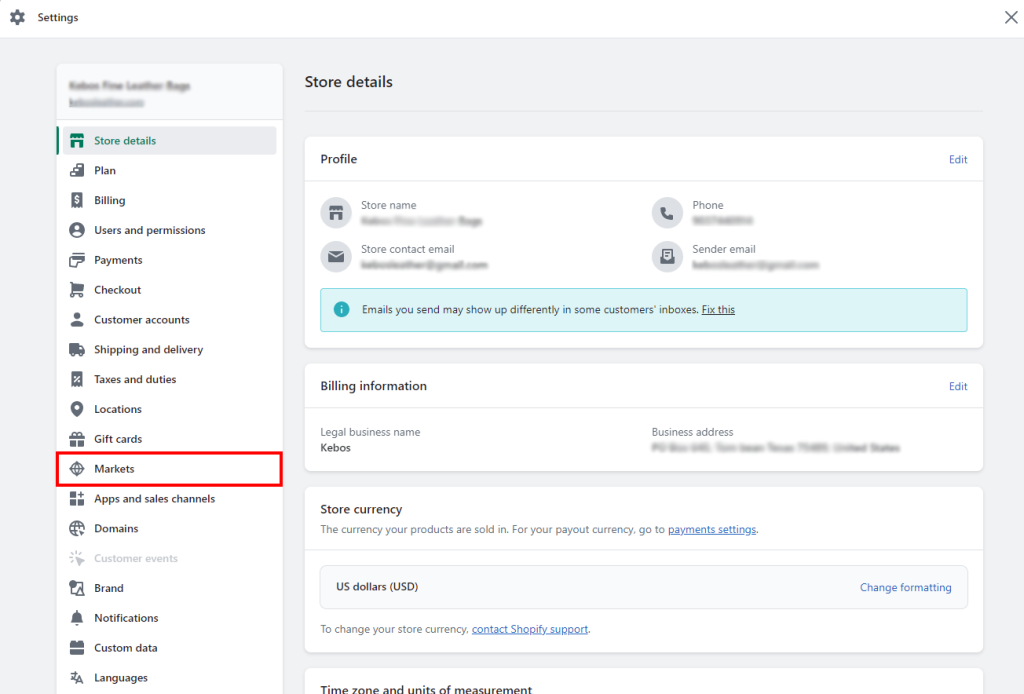
Step 2: Create a Market
After logging into your Shopify store, you must define a market, or target region, for your products. To do this, click on the option “Markets” situated on the left half of the screen. You will be able to add the Market (Country) to which you want to sell your products from this location.
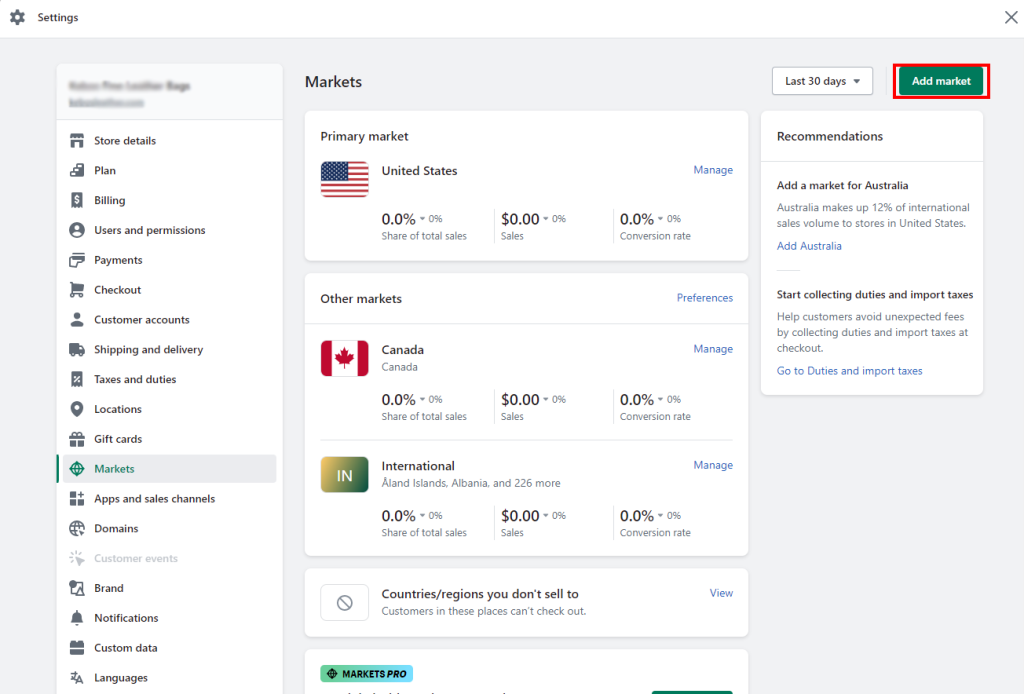
Simply enter the name of the market and select the countries or regions from the list to add it. From the list, you can choose multiple nations or regions. You can also define the continent and include multiple nations on it. It is essential to define your market because it will help you tailor your products, pricing, and content to the needs of your target audience.
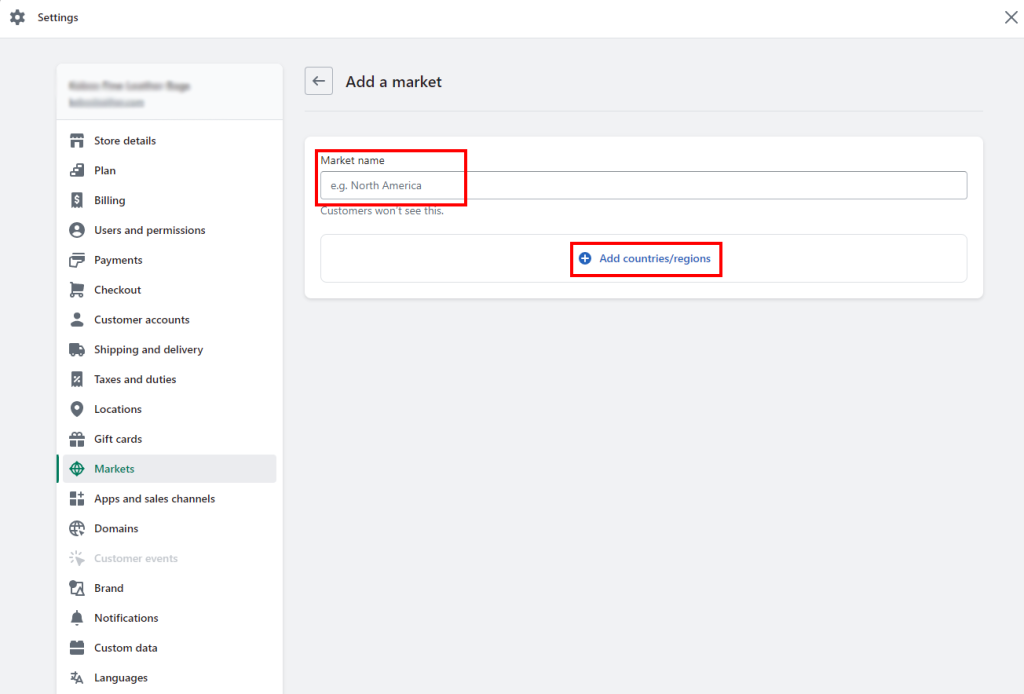
Step 3: Setup Basic Localization Features for Each Market
Creating a multilingual Shopify store makes it simpler to begin selling your product in various markets. All you need to do is set up basic localization features for each market. Here, you have three choices to address your site in the market.
- Domain
You can use the primary domain-only option, a custom domain, or folders with subfolders to make the market your primary market.
Domain: You can make a market your primary market by establishing your website on the primary domain by establishing a multilingual Shopify store. For instance, you can set up your website on the primary domain “myproduct.com” if you want to sell your product in the United States. This means that when people from the United States visit your website, they will see it on the main domain, no subfolders, and no custom domains.
Custom Domain: To provide visitors from a specific market with a more localized experience, you can assign a custom domain. Custom domains make it easier to set up a Shopify store that supports multiple languages and give customers access to the store in the language of their choice. If we want to sell our product in France, for instance, you could give it the domain name “myproduct.fr” to create a French-specific experience for visitors.
Subfolder: Under your primary domain, you can create subfolders for each language and market. For example, if you need to sell your items in Spain, you could make a subfolder for the Spanish language with the name”/es”. This means that Spanish speaking visitors will see your website on the main domain with a “/es” at the end, which stands for the Spanish language code.
By implementing these fundamental localization features for each market, you can guarantee that visitors from different parts of the world will have a customized experience when using your website. Don’t forget to take advantage of Local SEO’s best practices here.
- Language
You can assign distinct languages to each of your markets if you enable multiple languages in the settings of your store. Simply go to the “Languages” page in your multilingual Shopify store and select “Add Language.” The Shopify Translate & Adapt app can be used to translate your store into that language once it has been added. This will help make sure that your customers have a good time and shop in their own area.
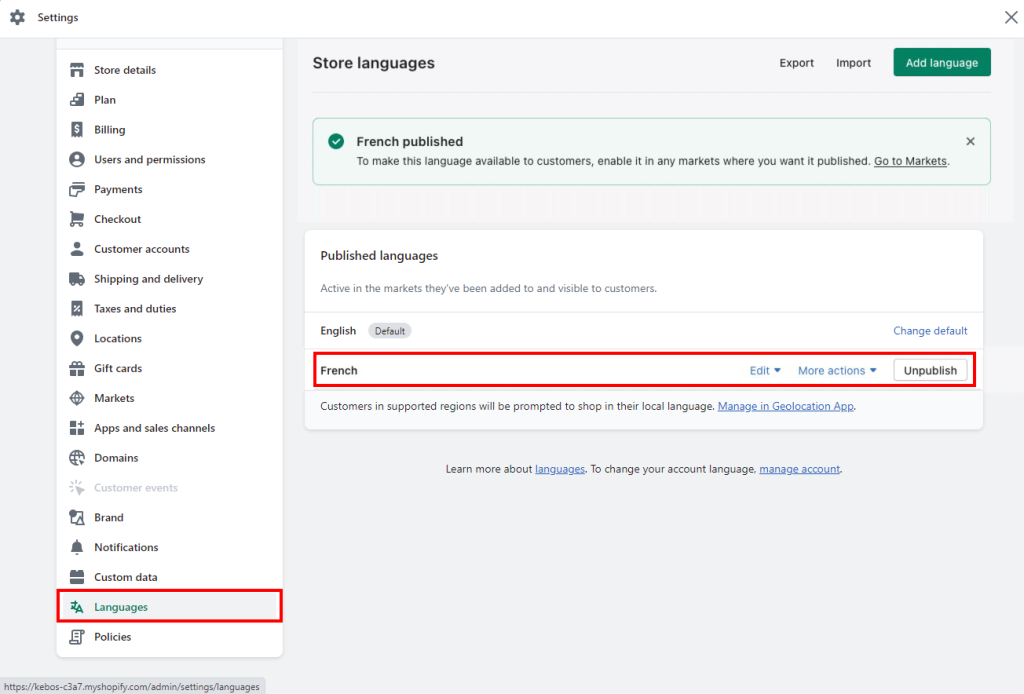
- Products and Pricing
Pricing products is an important part of running an online store, and it doesn’t have to be hard. You can easily adjust prices for your entire store or individual products with a multilingual Shopify store platform. Additionally, you can choose the currency for each market. Simply change the price to the amount you want by selecting the currency from the dropdown menu.
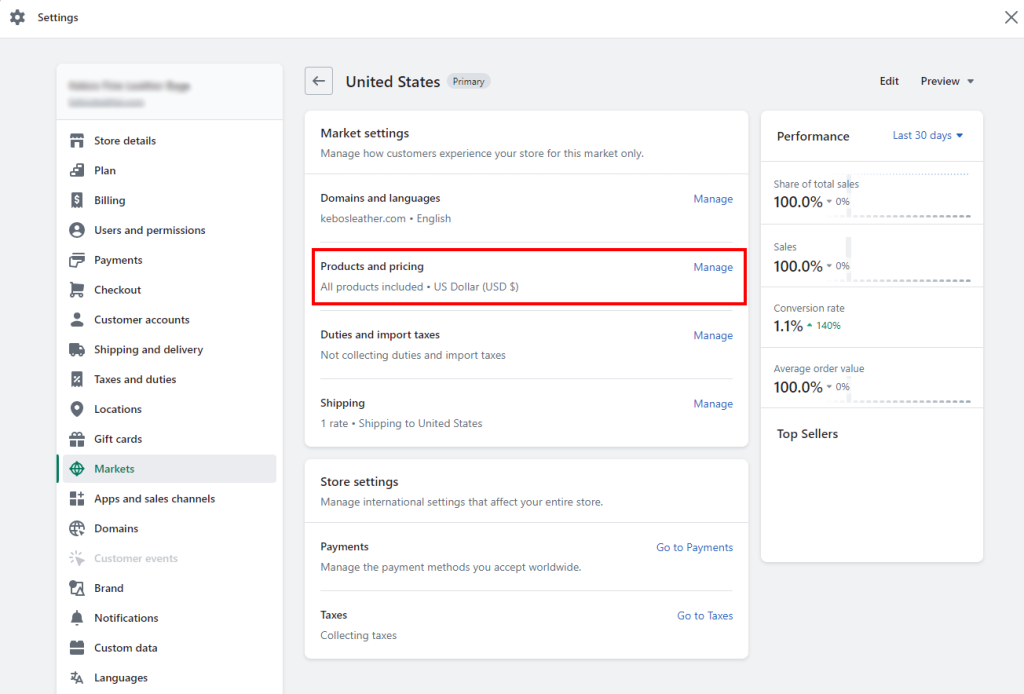
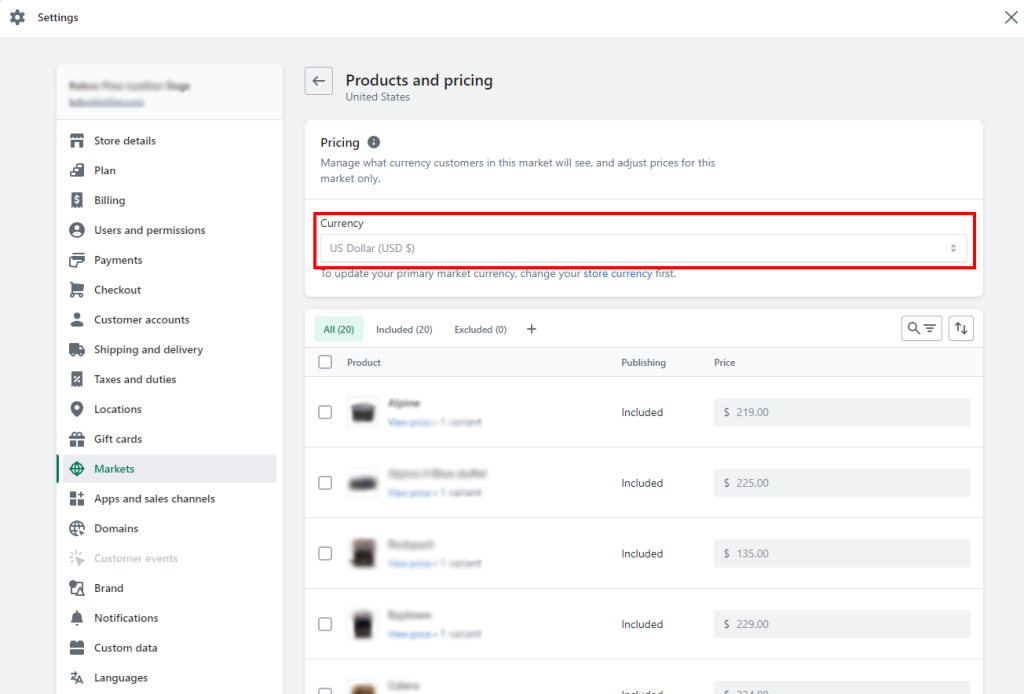
- Duties and Import Taxes
If you meet the eligibility requirements, you can specify the duties and import taxes for each market. Through its features, the multilingual Shopify store gives you more control over taxes.
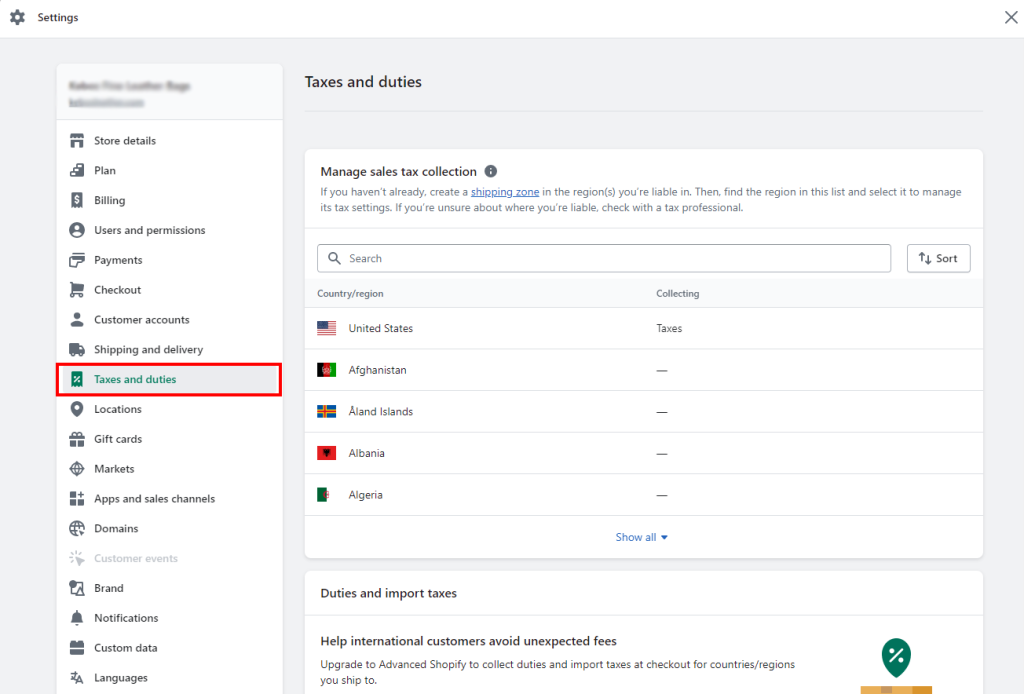
- Shipping
From the Shipping and Delivery settings, you can set shipping rates for your markets. To access the list of shipping rates that have already been set, simply go to Settings > Shipping and Delivery.
- Payments
The multilingual Shopify store offers a variety of payment options for customers from various nations. Payments are an essential component of any marketplace. You can set up the payment options for each store so that customers can choose the one that works best for them.
Step 4: Launch Your Multilingual Shopify Store
Once you have configured your multilingual Shopify store for each market, it is time to go live. Try to test your store completely in every language prior to launch to guarantee everything is working appropriately.
Step 5: Monitor and Improve Your Multilingual Store
As your business expands, it is critical to monitor and improve its performance for each market. This might include changing your evaluating system, showcasing strategies, and different advancements to guarantee your store is effective in every language market. Install Google Analytics 4 on your Shopify store to keep an eye on sales and traffic. Figure out how to set up GA4 ecommerce tracking on Shopify. Keep an eye on sales, customer feedback, and analytics to figure out where you can improve and make changes that need to be made. Your multilingual Shopify store should be monitored and optimized for optimal performance.
Step 6: Offer Customer Support in Multiple Languages
It is essential to provide customer support in the languages you intend to target in order to provide your customers with the best possible service. Check to see that your customer service team is equipped to respond to inquiries in all languages and to provide prompt and helpful assistance to your clients.
Step 7: Maintain and Improve Your Multilingual Shopify Store Regularly
Your multilingual Shopify store must be kept up to date and relevant to your customers. Make sure your store’s content, pricing, and marketing strategies are always being improved to give customers the best possible experience in every market.
Challenges of a Multilingual Shopify Store
Managing Content
Managing two or more languages on a Shopify multilingual store can be a tedious task when there is a lot of product information, blogs, and frequent assortment changes. This is due to the fact that content plays a significant role, and translating the website in fragments won’t really help. For this, we recommend that customers translate the entire store.
Content Translation
While utilizing a multilingual theme, it doesn’t translate the whole store. Content on the checkout page and different pages stay unaltered which can present issues when clients attempt to make a purchase. Likewise, labels, (for example, item labels, article labels, and blog labels) can’t be translated.
Costs
The apps you install in one store must also be installed in other stores. The total cost will rise as a result.
Also, Read: How Much Does An eCommerce Website Cost in 2025: A Complete Guide
Compatibility
This feature only supports third-party translation apps that are compatible.
Unchanged Product URLs
Even if a customer visits the website in their native language, the product URLs remain unchanged and display in the language in which they were created.
Wrapping Up
Making a multilingual ecommerce store is currently less difficult than at any other time. You won’t need any additional plugins to reach a global or domestic audience with the multilingual Shopify store. Make use of the features and start working right away. The platform’s features are made to help you effectively reach customers all over the world, allowing you to grow your business and enter new markets. Setting up a multilingual ecommerce store need not be a difficult task any longer with the right store, like Shopify.
FAQs
Why are multilingual stores important?
In today’s global market, multilingual stores help you to reach a wider target audience helping your brand grow, have more conversions and rank higher among SERPs.
What are the challenges in creating a multilingual store?
Translation of all your pages, compatibility with third-party apps and customer support in native language are a few challenges when it comes to creating a multilingual store.
Can I set up a Shopify multilingual store on my own?
Yes, you can set up a Shopify multilingual store on your own. You can easily set up one by following our simple guide provided above.
